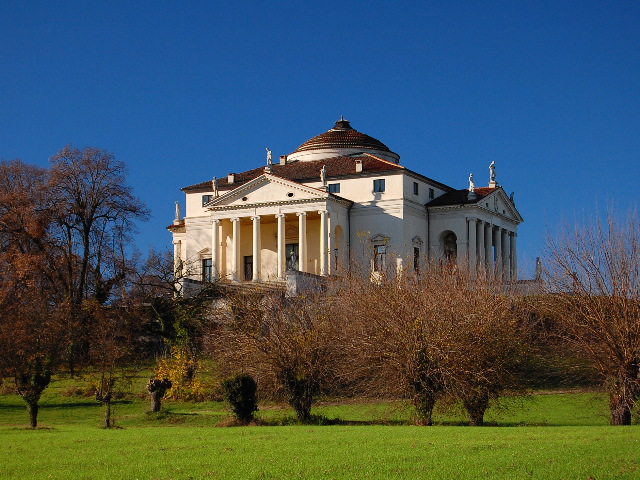
Villa Almerico Capra detta La Rotonda by Italian Renaissance architect Andrea Palladio, begun in 1567, though not completed until the 1590s.
Introduction:
Andrea Palladio, a renowned 16th-century Italian architect, left an indelible mark on the world of architecture with his classical designs that continue to inspire and influence to this day. His work seamlessly blends aesthetics with functionality, creating a timeless legacy that extends beyond the borders of Italy. This blog post will delve into Palladio’s architectural principles, explore some of his notable works in Italy and England, and highlight the enduring impact of his classical designs.
Palladian Principles:
Palladio’s architectural philosophy was deeply rooted in the classical traditions of ancient Rome and Greece. He emphasized proportion, symmetry, and the use of classical orders such as Doric, Ionic, and Corinthian columns. Palladio’s treatise, “The Four Books of Architecture,” became a seminal guide for architects, detailing his principles and showcasing his designs.
Notable Works in Italy:
- Villa Capra (Villa Rotunda), Vicenza: Palladio’s most iconic villa, Villa Capra, is a masterpiece of symmetry and balance. Its central dome, inspired by the Pantheon in Rome, crowns the structure with classical elegance.
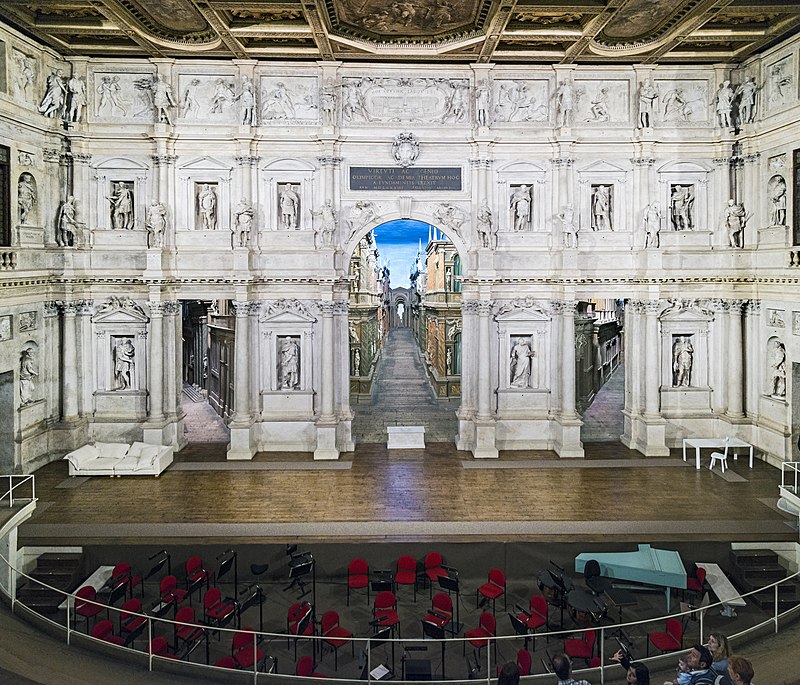
- Teatro Olimpico, Vicenza: The Teatro Olimpico stands as the oldest surviving indoor theater with a permanent stage. Palladio’s innovative use of perspective in the stage design creates a sense of grandeur and depth.
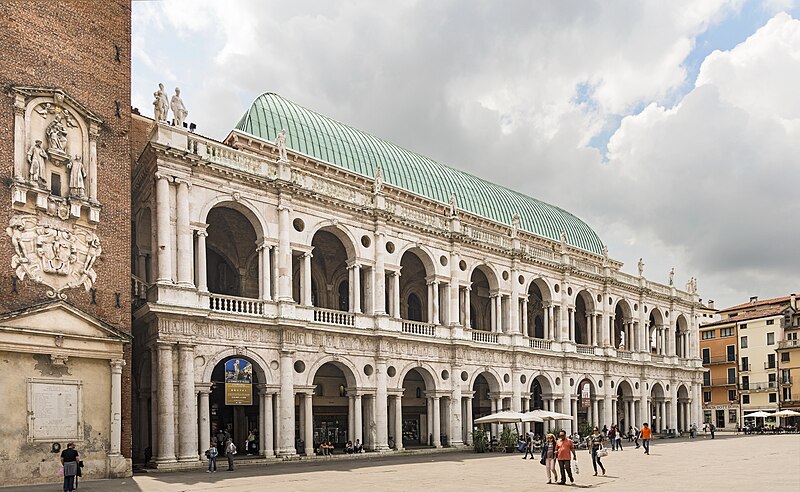
- Basilica Palladiana, Vicenza: The Basilica Palladiana showcases Palladio’s mastery of adapting classical elements into public buildings. The building’s loggias and monumental arches exemplify his commitment to harmonious proportions.
Palladian Influence in England
Chiswick House, London: Commissioned by Lord Burlington, Chiswick House reflects Palladian ideals with its symmetrical facades, classical columns, and pediments. It became a model for neoclassical architecture in England.
Palladio’s ideas gained widespread popularity in England during the 17th and 18th centuries, thanks to influential architects like Inigo Jones and later, Lord Burlington. Many English country houses and public buildings bear the unmistakable influence of Palladian design.
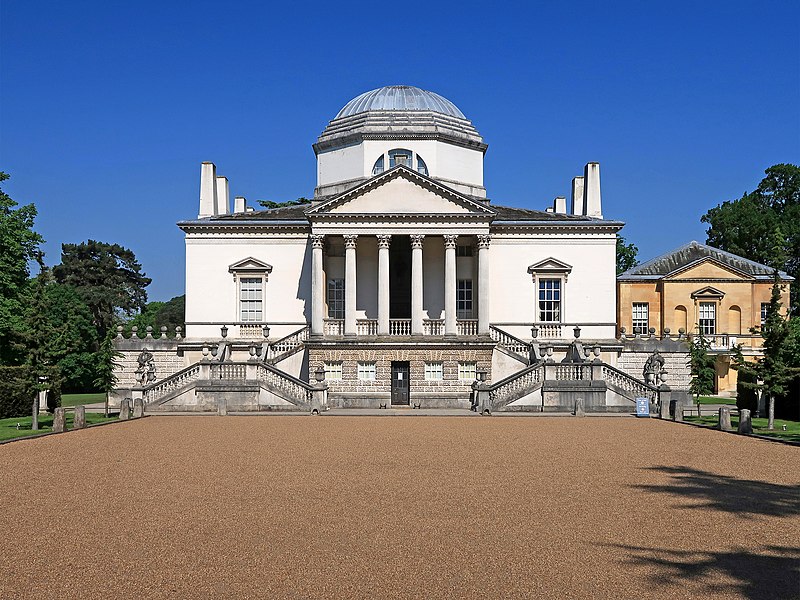
Chiswick House London, England
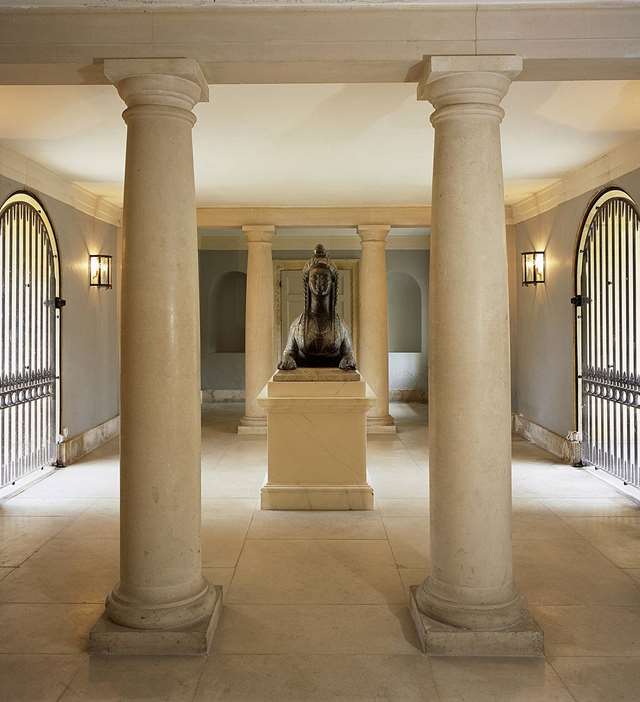 The ground floor of the link building, added in about 1732 to connect the old house with the new villa. The lead sphinx was made by John Cheere (1709–87)
The ground floor of the link building, added in about 1732 to connect the old house with the new villa. The lead sphinx was made by John Cheere (1709–87)
Holkham Hall, Norfolk: Holkham Hall, designed by William Kent, incorporates Palladian principles into a grand country estate. Its central block features a classical portico and balanced wings, creating a harmonious composition.
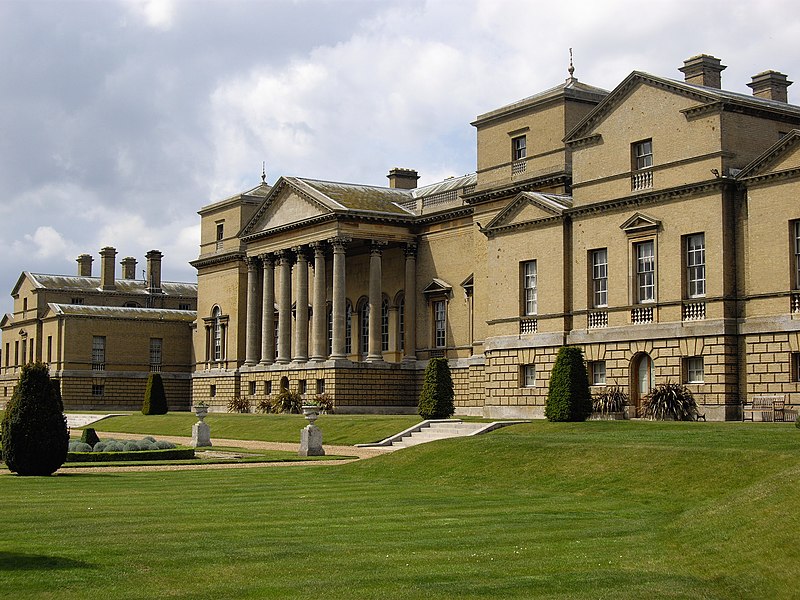
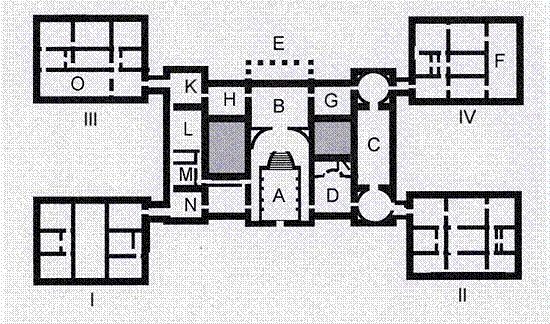
Simplified, unscaled plan of the piano nobile at Holkham, showing the four symmetrical wings at each corner of the principal block. South is at the top of the plan. ‘A’ Marble Hall; ‘B’ The Saloon; ‘C’ Statue Gallery, with octagonal tribunes at each end; ‘D’ Dining room (the classical apse, gives access to the tortuous and discreet route by which the food reached the dining room from the distant kitchen), ‘E’ The South Portico; ‘F’ The Library in the self-contained family wing IV. ‘L’ Green State Bedroom; ‘O’ Chapel
Legacy and Continuation:
Palladio’s legacy extends far beyond his lifetime, influencing architects across centuries. His principles continue to shape classical and neoclassical architecture worldwide, with echoes of his designs evident in government buildings, museums, and private residences.
Conclusion:
Andrea Palladio’s architectural legacy is a testament to the enduring power of classical design. From his masterful villas in Italy to the grand estates in England, Palladio’s influence remains omnipresent in the world of architecture. As we appreciate the timeless beauty of his creations, we also recognize the profound impact he has had on shaping architectural discourse and inspiring generations of designers.
